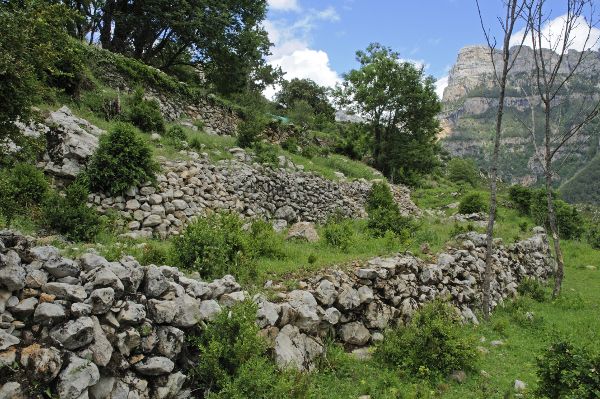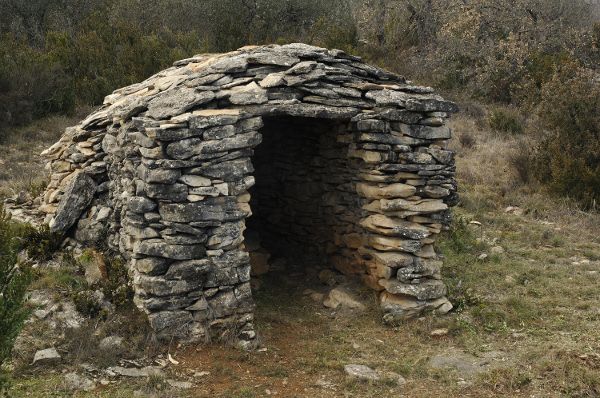Old Terraces fields in La Fueva
Categories/ tags: Utilization of water and wind power; Drystone terracing in agriculture.
Historical context: Nestled in the enchanting landscape of La Fueva in Huesca, Spain, the Old Terraced Fields stand as a silent testament to the enduring agricultural practices of bygone eras.
Originating centuries ago, these terraces were meticulously crafted by hand, using locally sourced stones. Their historical significance lies in the sustainable farming methods they represent, allowing communities to thrive across generations.
Form – main architectural features: These ancient terraced fields showcase the artistry of drystone terracing. The walls, built without mortar, elegantly weave across the steep slopes.
The careful stacking of stones creates terraces that prevent soil erosion, retain moisture, and provide level surfaces for cultivation. The symphony of these stones exemplifies the delicate balance between human ingenuity and natural harmony.
Function: The primary function of the drystone terraces was to optimize land use on challenging terrains. Constructed to cultivate steep slopes, these terraces maximized crop production, providing sustenance for communities over the years. Their structural design facilitated effective water management, soil conservation, and the creation of unique microclimates beneficial for agriculture.
Lessons for sustainability: The art of drystone terracing imparts timeless lessons for sustainable farming practices. These terraces, through their ingenious design, prevent soil erosion, conserve water, and contribute to long-term soil fertility.
Their role in effective water management, biodiversity preservation, and habitat creation serves as a blueprint for cultivating sustainability in contemporary agriculture.
Cultural heritage and tourism: Beyond their agricultural significance, the Old Terraced Fields in La Fueva embody cultural and historical richness. Preserving the ingenuity of past generations, these terraces have become a focal point for heritage conservation.
Efforts to restore and maintain these structures attract tourists, offering them a glimpse into the agricultural wisdom of the past. This tourism not only supports local economies but also fosters an appreciation for sustainable agriculture.
In conclusion, the Old Terraced Fields in La Fueva are not merely remnants of the past; they are living expressions of sustainable agriculture. Their revival and preservation are essential for harnessing their potential in soil conservation, water management, biodiversity support, and economic development.
As we embrace the lessons from these terraced fields, we pave the way for a greener, more resilient future, rooted in the wisdom and innovation of our ancestors.
Location: Aínsa-Sobrarbe, Huesca – Spain
Old Terraces fields in La Fueva – Spain
Sources
Geo Parque Pirineos. (n.d.). I Taller de piedra seca de Sobrarbe. Retrieved February 26, 2024, from https://www.geoparquepirineos.com/contenidos.php?niv=1&cla=_2OA1CDG68&cla2=_5CR0TU0NN&cla3=&tip=2&pla=0&idi=3
Sobrarbe Digital. (2018). La piedra seca reconocida por la Unesco. Retrieved February 26, 2024, from https://www.sobrarbedigital.com/la-piedra-seca-reconocida-por-la-unesco/







